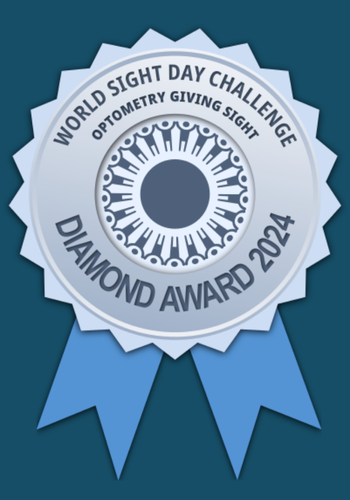Intense Pulsed Light (IPL) Therapy for Dry Eye
For many people with Dry Eye Disease, the problem isn’t a lack of tears, it’s inflammation of the eyelids and poor meibomian (oil) gland function. Intense Pulsed Light (IPL) therapy is an advanced treatment that targets the root causes of dry eye, offering lasting relief that artificial tears and compresses can’t achieve.
At Mountain View Optometry, we use IPL to treat Meibomian Gland Dysfunction (MGD), one of the most common contributors to dry eye. This safe, non-invasive therapy restores healthier gland activity, reduces inflammation, and improves the overall stability of your tear film.
How IPL Works
IPL delivers gentle pulses of light to the skin over and around your eyelids. These light bursts help address several underlying factors of MGD and Dry Eye Disease:
- Reduces inflammation: Targets abnormal blood vessels that fuel chronic inflammation.
- Clears gland blockages: Heat energy softens and loosens thickened oils, allowing glands to flow more freely.
- Fights bacteria and mites: Reduces bacteria and Demodex mites that worsen dry eye.
- Improves tear film quality: Restores healthier oil production, slowing tear evaporation and improving comfort.
The result is clearer, more stable tears that help your eyes feel refreshed and comfortable throughout the day.
What to Expect During Treatment
IPL therapy is quick, safe, and well-tolerated.
- A protective shield is placed over your eyes for comfort and safety.
- Short, precise bursts of light are applied to the skin just below your eyes.
- The treatment typically takes only 45 minutes.
- Most patients require a series of 4 sessions, over two months for optimal results.
Post-Treatment
- Protect the treated area with sunscreen with SPF of 30 or higher.
- Use a gentle cleanser and moisturizer for three to four days.
- Do not scrub or pick at the treated area.
- Avoid Glycolic and Retin A products during and shortly after IPL treatment.
- If skin feels warm or uncomfortable; you can use a cool compress or aloe-based products.
Benefits of IPL for Dry Eye
Patients who choose IPL usually notice improvements such as:
- Reduced eye irritation, burning, and redness
- Less reliance on artificial tears
- Better visual comfort during reading and screen use
- Longer-lasting relief compared to drops or compresses
- If a patient has been identified as having facial Rosacea, we recommend also doing “IPL Photofacials” to have a greater effect on dry eye treatment. IPL Photofacials also improve evenness of skin tone, reduce age spots and sun damage and decrease redness on the cheek and nose areas.
Is IPL Right for You?
IPL is particularly effective for patients with:
- Meibomian Gland Dysfunction (MGD)
- Inflammatory dry eye linked to skin conditions like rosacea
- Chronic symptoms not relieved by drops or home remedies
During your dry eye assessment at MVO, we’ll determine whether IPL is the right treatment for your condition or if a combination of therapies, such as RF or Jett Plasma, will provide the best results.
Book Your Dry Eye Assessment Today
If you’re struggling with persistent dry eye symptoms, it may be time to move beyond eye drops and explore a solution that treats the source of the problem. IPL therapy at Mountain View Optometry is a proven, non-invasive option that restores healthier eyes and lasting comfort. Get the relief your eyes deserve.
Calgary: (403) 286-0888
Cochrane: (403) 851-2020
Frequently Asked Questions
How many IPL treatments will I need?
Most patients require 4 treatments spaced two weeks apart, followed by periodic maintenance sessions, typically 2 to 3 sessions every 6 to 12 months.
Does IPL hurt?
No, patients usually describe the sensation as a brief warming sensation or snap, but the treatment is well-tolerated by most.
How quickly will I notice results?
Some patients notice improvement after the first second or third session, but results typically build over the full treatment series.
Can IPL be combined with other treatments?
Yes. IPL is often paired with Radio Frequency (RF) or Jett plasma for more complete relief of Meibomian Gland Dysfunction.

